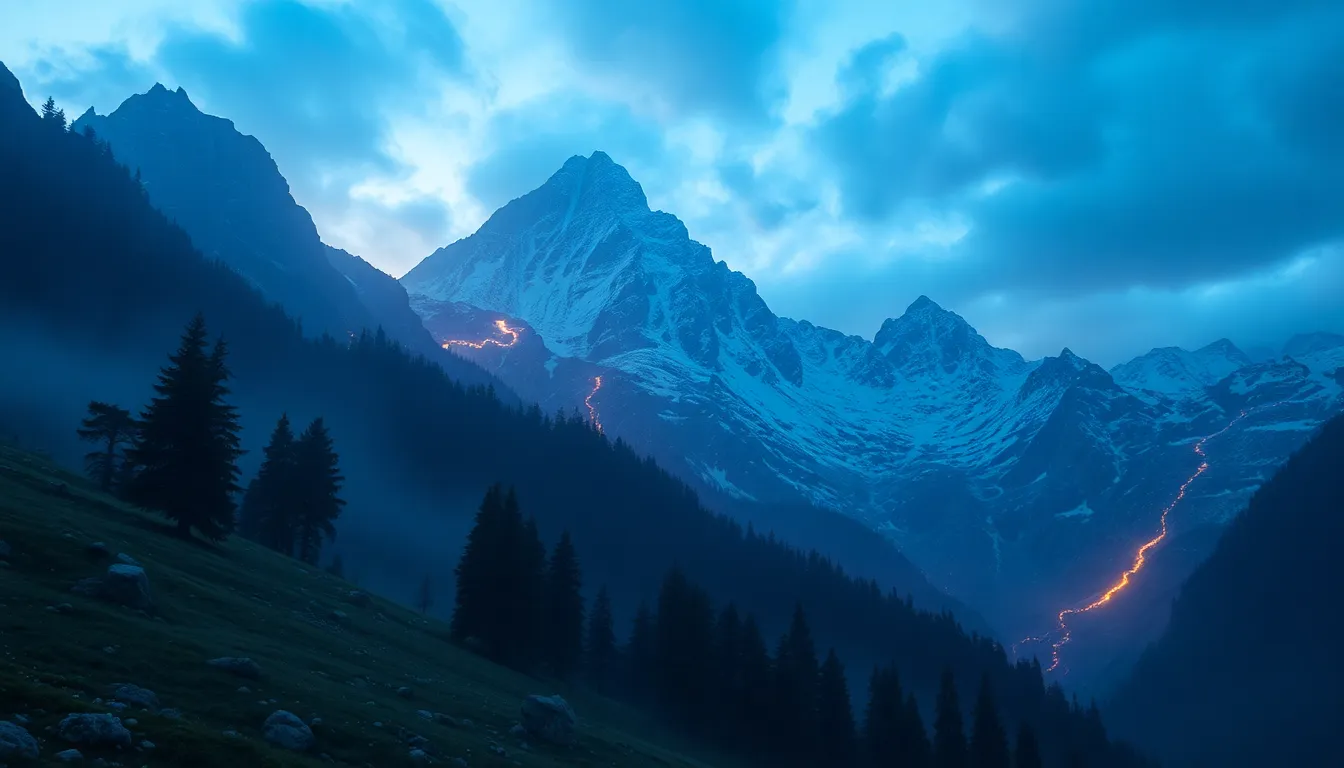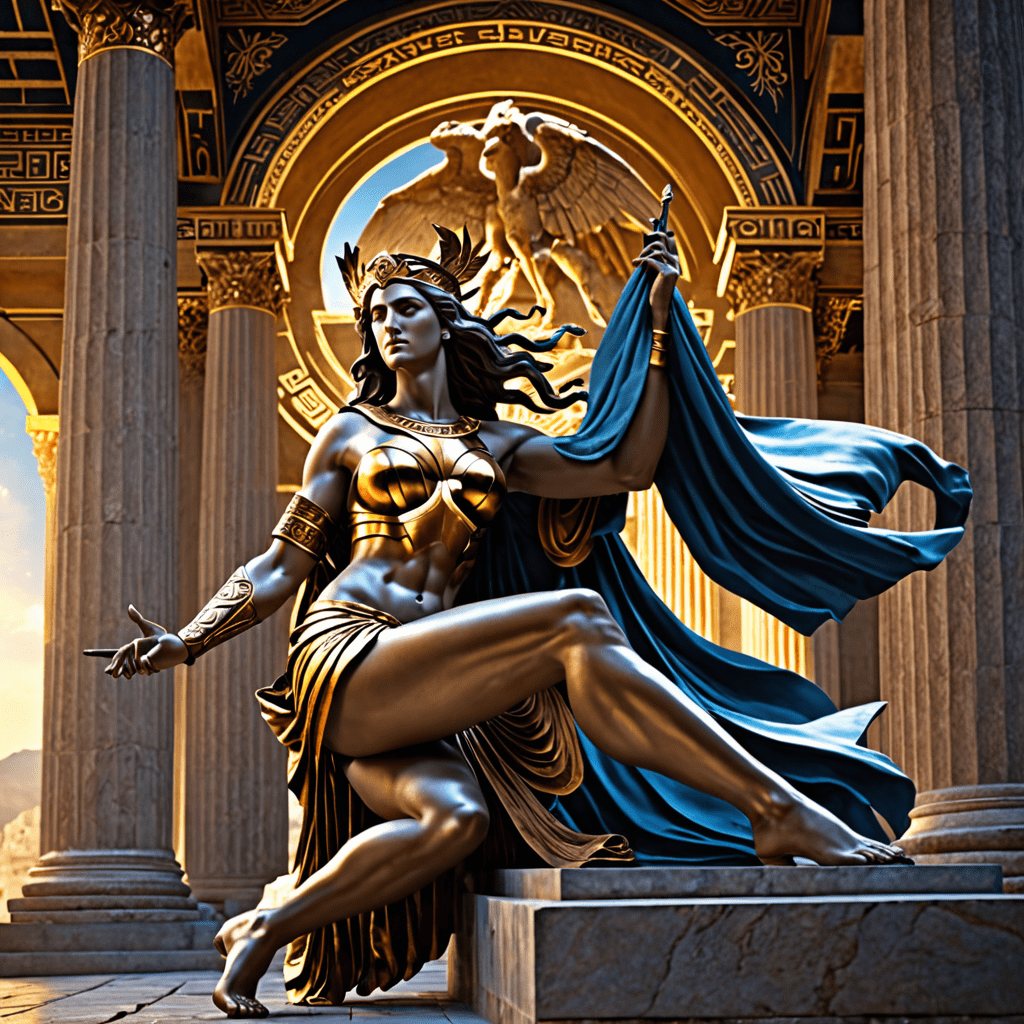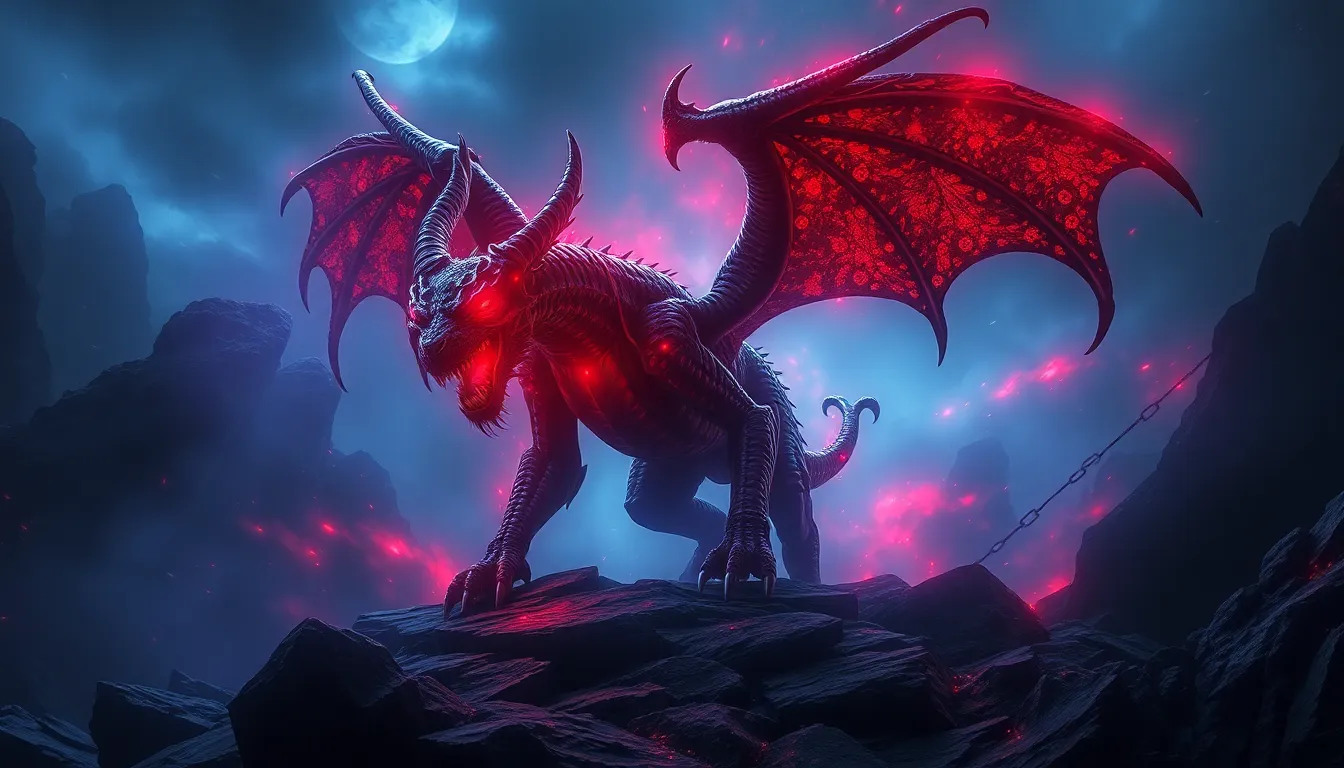The Enchanted Slopes: Myths of Magical Creatures in the Mountains
Introduction: The Allure of Mountain Myths
Mountains have long captivated the imagination of humankind, serving as both physical barriers and spiritual realms. Across various cultures, these towering giants are often seen as sacred spaces, where the earthly meets the divine. The allure of mountains transcends mere geography; they are steeped in myths and legends that tell tales of magical creatures that inhabit their slopes.
This article explores the rich tapestry of mountain folklore, focusing on the enchanting beings that are said to dwell in these elevated landscapes. From the snow-clad peaks of the Himalayas to the rugged ranges of the Rockies, the myths surrounding these magical creatures reflect humanity’s deep connection to nature.
The Origins of Mountain Myths
The origins of mountain myths can be traced back to the earliest civilizations that revered the mountains as places of power and mystery. Historical context reveals that many cultures developed their folklore based on the unique geographical features of their surroundings. For instance:
- In Asia: The towering Himalayas are home to tales of the Yeti, a creature symbolizing the unknown.
- In Central America: The Chaneques are believed to protect the forests and mountains, embodying the spirit of the land.
- In North America: Native American tribes recount stories of mountain spirits that guide and protect their people.
The natural landscapes, with their rugged terrains and unpredictable weather, play a significant role in shaping these myths. The awe-inspiring beauty and danger of mountains inspire both reverence and fear, leading to the creation of narratives that explain the inexplicable.
Iconic Magical Creatures of the Mountains
Throughout the world, various mythical beings are associated with mountainous regions, each with unique characteristics and significance:
- Yeti: Often referred to as the “Abominable Snowman,” this elusive creature is said to roam the snowy peaks of the Himalayas. Descriptions vary, but it is commonly depicted as a large, ape-like being.
- Chaneques: In Mexican folklore, these small, mischievous spirits are believed to guard the mountains and forests, often playing tricks on those who disrespect nature.
- Mountain Spirits: Many cultures, including Tibetan and Native American, speak of spirits that inhabit the mountains, guiding travelers and offering protection.
Despite their differences, there are notable similarities in how these creatures are depicted. They often embody the duality of nature—both nurturing and dangerous, reflective of the mountain environments they inhabit.
Cultural Significance and Symbolism
The mythical creatures of the mountains serve important roles in folklore and storytelling. They often symbolize broader themes such as:
- Protection: Many mountain creatures are seen as guardians of the land, ensuring that nature is respected and preserved.
- Danger: The treacherous nature of mountains is often personified by these beings, warning adventurers of the risks associated with the wilderness.
- The Unknown: Creatures like the Yeti represent humanity’s fear of the unknown, embodying the mysteries that lie beyond the familiar.
These themes resonate deeply within cultures, reflecting societal values and fears while reinforcing the need for balance between humanity and nature.
Famous Mountain Legends and Their Stories
Across different regions, specific legends have emerged, each with unique narratives that reveal cultural values:
- The Yeti of the Himalayas: Stories of the Yeti have been passed down through generations, often describing encounters that evoke both wonder and terror.
- The Legend of La Llorona in the Andes: This tale intertwines the mountains with themes of love, loss, and the supernatural, illustrating the emotional landscape of the Andes.
- The Sasquatch of the Rockies: In North America, the Sasquatch legend symbolizes the connection between indigenous cultures and the environment, reflecting a deep respect for nature.
These stories not only entertain but also serve as cautionary tales, embedding societal norms and fears within their narratives.
The Intersection of Nature and Mythology
The characteristics of magical creatures are often shaped by the natural environment they inhabit. For instance, the Yeti’s snow-white fur is an adaptation to its icy habitat, while the Chaneques are small and elusive, mirroring the dense, hidden forests of Mexico.
Moreover, ecological phenomena such as:
- Avalanches: These natural disasters often become the backdrop for tales of lost souls or protective spirits.
- Storms: Fierce weather conditions can give rise to stories about creatures that control or embody the forces of nature.
This relationship between ecology and folklore highlights how deeply intertwined human cultures are with the natural world, reinforcing the relevance of these myths.
Modern Interpretations and Representations
In contemporary society, the perception of mountain creatures has evolved, largely influenced by popular culture. Films, books, and art have reimagined these beings, often romanticizing and commercializing their legends. The Yeti, for example, has become a symbol of adventure and exploration, appearing in various media formats.
Additionally, modern retellings often focus on themes of environmentalism, using the mystique of these creatures to raise awareness about conservation and the importance of preserving natural habitats.
Conservation and the Mystique of Mythical Beings
The enduring nature of mountain myths plays a crucial role in promoting environmental conservation. By weaving folklore into conservation efforts, communities can foster a sense of respect for their natural surroundings. For instance:
- Mythical creatures as guardians: Many cultures view these beings as protectors of the land, encouraging sustainable practices.
- Folklore festivals: Events centered around local legends can raise awareness and draw attention to conservation issues.
Through storytelling, communities can inspire future generations to value and protect their natural environments.
Personal Encounters and Anecdotes
Many individuals claim to have experienced encounters with mountain creatures, lending a personal dimension to these myths. Anecdotes range from sightings of elusive beings to mystical experiences in nature. These stories often evoke strong emotions, tapping into the psychological aspects of belief and fear.
Such encounters can serve as a means of connection to the past, grounding individuals in a shared cultural heritage while igniting their imagination.
Conclusion: The Enduring Legacy of Mountain Myths
The myths of magical creatures in the mountains are more than mere stories; they are vital components of cultural identity and heritage. As we reflect on the importance of preserving these tales, we recognize their role in shaping our understanding of nature and ourselves.
As the world continues to evolve, the enchanting slopes of mountains will remain a source of inspiration, reminding us of the profound relationship between humanity and the natural world. By cherishing and sharing these myths, we ensure that they endure for future generations to explore and cherish.


